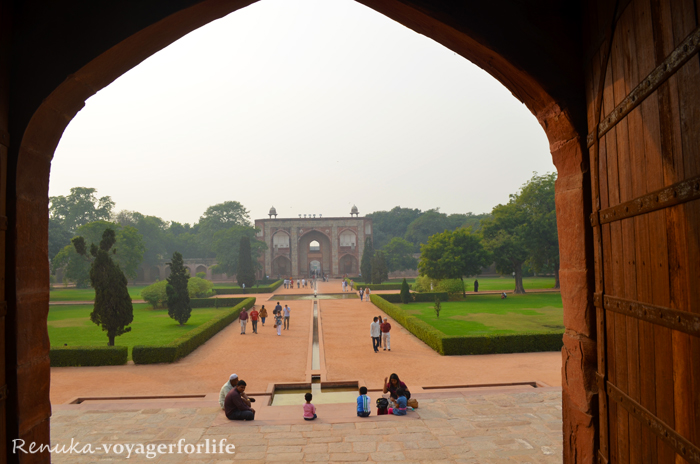10 Interesting Facts About Humayun’s Tomb

Built in the 15th century, Humayun’s Tomb is one of the most impressive historical sites in Delhi. Below are some of the interesting facts about Humayun’s Tomb that you would like to know –
I visited Humayun’s Tomb in the early days of my blogging journey. I had travelled quite a bit across the country. However, I was not traveling as frequently as I do now. Thereby, I chose to explore my own city, which was Delhi back then.
Although I’m not a fan of historical sites or monuments, I decided to visit all the main tourist attractions in Delhi, such as Qutub Minar, Lotus Temple, Jantar Mantar, India Gate and Humayun’s Tomb. I wanted to make the most of being in a city like Delhi, which had such a significant history.
And, not to forget Humayun’s Tomb is listed under UNESCO World Heritage Sites. I found Humayun’s Tomb quite intriguing for many reasons. To begin with, it has such an awe-inspiring aura to it. The whole complex of the tomb is splendid! It makes me wonder what made the old folks create such huge, beautiful tomb sites. It’s something to think deeply about.
So yes, the magnificent site is not just for history enthusiasts. It’s for people like me as well, who wants to wander, take in the fresh air, enjoy sunshine, and absorb the atmosphere.
The Humayun’s Tomb and its unique facts
1. There are more than 100 graves within the entire complex. Several of them are on the first level terrace, known as “Dormitory of the Mughals”.
2. Humayun’s Tomb was designed by a Persian architect, Mirak Mirza Ghiyath.
3. It was notably the first garden-tomb on the Indian subcontinent with beautiful causeways and channels.
4. It was the first Indian building known as a classic specimen of the double-domed elevation with kiosks on a huge scale.
5. The tomb’s concept of eight side chambers symbolizes the Islamic concept of paradise.
Planning a trip in Delhi? Get a great hotel deal on Booking.com
6. The building introduced the distinctive combination of red sandstone and white marble.
7. Contrary to Taj Mahal, which a husband built in the memory of his wife, Humayun Tomb was built by a wife, Hamida Banu Begam, for her husband.
8. UNESCO declared the tomb a World Heritage Site in 1993.
9. Humayun’s Tomb has earned the status of being a landmark in the expansion of Mughal architecture.
10. Humayun’s Tomb inspired the construction of the much celebrated Taj Mahal, which was built a century later.
You can also read my post 5 Things To Love About Delhi to know more about my personal perspective on the city, and how I enjoyed exploring it.
The best time to visit Humayun’s Tomb (or for that matter any site in Delhi) is February when the city is bathed in spring colours and the weather is extraordinarily pleasant. Yes, you can get outdoorsy in Delhi post October also when temperatures drop.
PS: All the facts mentioned have been taken from Wikipedia and the historical site’s guide.
Disclaimer: This post has affiliate links. If you make a booking through these links, I will earn a small commission at no extra cost to you. Thank you for your support!
Do you know of more interesting facts about Humayun’s Tomb?
Enjoyed this post? Subscribe to receive ‘new posts’ straight in your inbox!